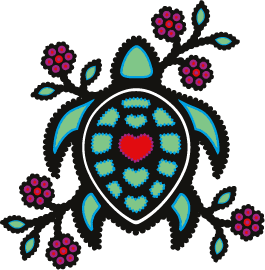Gross Motor Skills
Gross motor describes the activities and skills that involve large groups of muscles - the arms, legs, and trunk. This includes postural control and balance, locomotion (movement such as walking), overall coordination of the limbs and the trunk, strength and endurance, and body awareness within the environment.
Balance and Postural Control
For our children, balance and postural control are developed as they begin navigating their environment through crawling, pulling to stand, and walking. Then, they begin to navigate a variety of surfaces and stairs, as well as begin to run and jump and climb. All of these activities develop their sense of balance (related directly to the vestibular system and the visual system) and postural control - including their ability to “catch” themselves before falling.
As adults, we utilize our sense of balance when walking through our environment, if we play sports - whether organized or with our family, children, and friends, and when participating in various forms of exercise, including weight lifting, yoga, and running.
Locomotion
Locomotion is simply moving from one place to another. Children begin locomotion through rolling, then crawling, then cruising, and finally walking. This requires coordination of the arms, legs, trunk, and head as well as incorporating the visual sense to visually navigate the environment.
Other forms of locomotion include running, riding a bicycle, swimming, driving, riding a horse, and more.
Motor Coordination
Motor coordination is the ability to control and direct our gross motor movements in order to perform a desired action. This can involve just the arms - both right and left - or just the legs. This can involve both arms and legs. Typically, motor coordination also involves the trunk and head in some way. Motor coordination also involves balance and postural control, as well as strength, endurance, and body awareness.
Coordination begins in infancy as the baby begins to intentionally move arms and legs - they begin to intentionally roll and push up into a crawling position, then begin to actually crawl - thus coordinating both arms and legs together in an alternating pattern. Next comes learning to walk, which is also coordinated in an alternating pattern, as is running, walking up and down stairs, and riding a bicycle.
All childhood activities involve some form of gross motor coordination. Think about climbing up a ladder to get to the top of the slide, or climbing onto a swing and learning how to pump. Then there’s running and learning how to climb around playground equipment, riding a scooter or a bicycle, and then learning how to play specific sports such as soccer or baseball.
As adults, we may also participate in sports and climbing activities such as a rock climbing gym or simply chasing our children on the playground. Additionally, we must coordinate our gross motor movements to complete daily life tasks such as cooking, cleaning, and even driving. We are constantly coordinating our movements, typically without even thinking about it.
Strength and Endurance
Gross motor skills require a certain amount of muscle strength and endurance to successfully move through various movement patterns. Muscle strength is simply the ability to exert a certain amount of force, while endurance is the ability to continue on with a specific activity.
Infants begin building gross motor strength and endurance almost immediately. When placed on their tummy, they begin to build the necessary strength throughout their neck and trunk in order to lift their head up independently. This progresses to building strength and endurance to push themselves up on their arms, roll, and move into a crawling position. You may notice a baby who is just learning the crawling position - they cannot initially hold it for very long, but the more they practice, the stronger they get (the more endurance they build).
Children build strength and endurance with movement. The more active they are, the stronger they will be and the more endurance they will have (typically). This is the same with adults - the more active we are, the more likely we are to build strength and endurance for a variety of gross motor skills.
Body Awareness
Body awareness is understanding where your body is in space and in relation to other objects/people within your environment. Body awareness is directly related to our proprioceptive sense, which is the awareness of your body through receptors in your muscles and joints. While body awareness and proprioception may sound the same, we will talk about body awareness as it relates to gross motor skills - understanding how your body moves for specific tasks.
Activities to develop gross motor skills
Create obstacle courses
Throwing and catching
Hopscotch
Biking (stationary or moving)
Dancing
Balance beams
Tag
Hula hooping
Playing on the play ground
Balloon volleyball
Simon says
Wheelbarrow walking
Twister board game
Any sport (can be modified)
Playing catch
Trampoline
Martial arts - youtube martial arts children
Animal walks
Yoga - youtube yoga for children
Egg and spoon relay race (can be small ball instead of egg)
Jump rope
Floor is lava game using river stones






